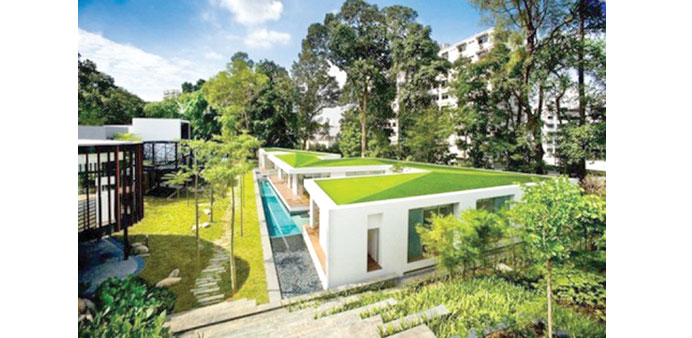Qatar University and Swiss Embassy, in collaboration with Zurich University of Applied
Sciences, organise workshop to promote environmentally friendly green terraces in the city
By Anand Holla
The Hanging Gardens of Babylon, built around 500 BC, were perhaps the world’s first green roofs. While the origins of such an ingenious idea can be traced back to one of the seven wonders of the ancient world, modern green roof technology made its appearance sometime in the early ’70s in Germany.
Green roofs – or rooftop gardens – are essentially vegetative layers grown on a rooftop, and fortunately, their indispensability in our urban jungles is being increasingly recognised the world over.
On Wednesday, it will bring in new verve to Qatar in a joint event by Department of Architecture and Urban Planning, College of Engineering, Qatar University and The Swiss Embassy in Qatar, in collaboration with Zurich University of Applied Sciences (ZHAW).
Titled ‘Landscape as Infrastructure for Biodiversity and Food Security: Perspectives from Switzerland and Qatar’, the day-long event will feature a series of lectures and a workshop on green roofs.
The activities kick off at 10am, at Qatar University CENG Female Building, with the opening of the exhibition The Swiss Touch in Landscape Architecture, and an introduction to the event by Dr Anna Grichting, Assistant Professor and Curator, Department of Architecture and Urban Planning, Qatar University, and Dr Yasser Maghoub, Head, Department of Architecture and Urban Planning, Qatar University.
“Switzerland and Qatar are both considered as small states, but with far reaching global presence. With constrained territorial land, both states have invested in producing a knowledge economy, and are committed to building sustainable societies and infrastructure,” says the note to the event.
In fact, only recently, a Solar Swiss airplane departed from Abu Dhabi on a trip around the world. Along the same lines, Qatar Airways pioneered by flying the first airplane with Natural gas-to-liquid (GTL) jet fuel which reduces carbon emissions.
Green roofs can be installed on all sorts of buildings, and they can be as simple as a two-inch-thick covering of hardy groundcover or as complex as a full-fledged park complete with trees. Not only do they provide shade and remove heat from the air through evapotranspiration, the most obvious benefits of green roofs are reduced use of energy needed for cooling or heating the structures and reduced air pollution and greenhouse gas emissions.
“An emerging field and discipline that contributes to increasing the quality of life and improving urban ecosystems is Landscape, which includes Ecological Planning, Landscape Design, Green Infrastructure and Food Systems. In rapidly urbanising environments, an important new terrain of Landscape is the Green Roof, which can participate in increased biodiversity, carbon capture and heat island reduction, as well as the production of food production,” the note adds.
The event will bring pioneering knowledge on Green Roofs developed at the Swiss University of Applied Science and implemented in international projects such as the Olympic Games venues in London and the Urban Rooftop farm in Basel.
The objective is to translate the experiences and lessons learned of the Swiss Green Roofs to develop similar elevated landscapes in Doha and as well as other Gulf cities and Drylands. “A partnership with local agricultural and landscape industries will offer a platform to link academia, professionals and industry in order to develop projects and prototypes in Qatar. The event will include presentations by researchers and professionals and a workshop for students by green roof and urban farming specialists, exploring the implementation in Qatar and other Drylands, as well as Landscape events hosted by QU faculty and students,” the note further adds.
Interestingly, only last week, France passed legislation that requires all new buildings in commercial zones to have green roofs – partial roof coverage with either solar panels or rooftop gardens.
A recent study by researchers from Universidad Politécnica de Madrid and Università Politecnica delle Marche found that green roofs with high vegetation density are 60% more efficient than non-green roofs.
At the event, Qatar University students will also exhibit research and projects on landscapes that are socially, agriculturally and environmentally productive.

NATURAL COOLING: A house with a green roof. The event will bring pioneering knowledge on Green Roofs developed at the Swiss University of Applied Scie
